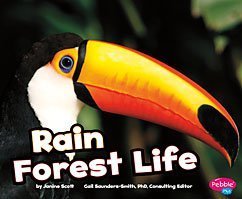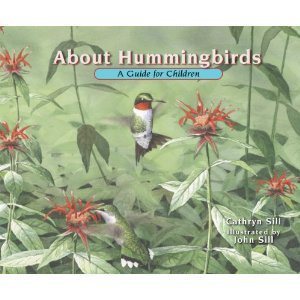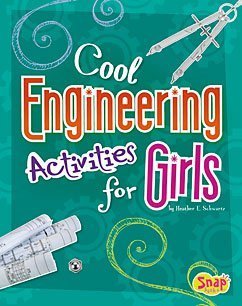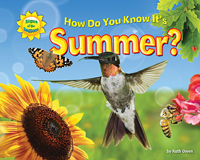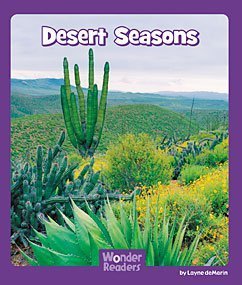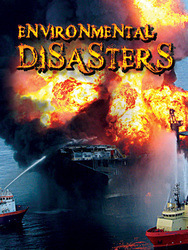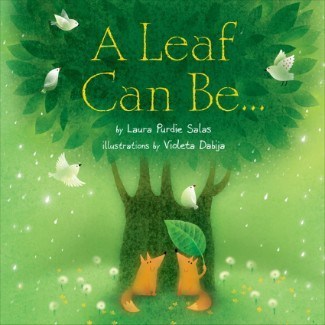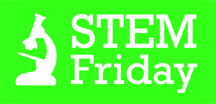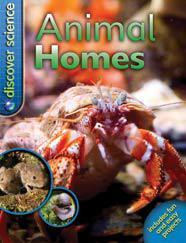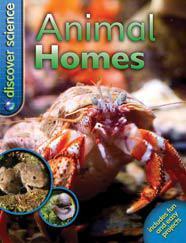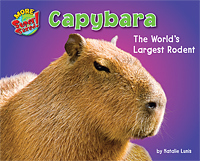Shirley Smith Duke's Blog, page 4
May 29, 2012
Rain Forest Life
By Janine Scott
Pebble Plus, Capstone, 2012
Habitats Around the World
ISBN # 9781429668156
Grades PreK-2
Nonfiction PB (24 pages)
“Tropical rain forests are hot, steamy places. It rains nearly every day. These areas of thick trees and plants are home to millions of animal species.”
This book for early readers explains the basics of this fascinating biome. The correct terms for the layers are used and shown in the image opposite the text. Each layer’s page of information includes the plants and animals living in it and the page opposite shows an illustration of an animal there. The pictures are labeled where needed, a useful help for identifying specific animals. The final spread wraps up the information and asks the reader to imagine the new life to be found.
I like the simple, accurate explanation the book provides. The wording is clear without talking down to the reader and makes an interesting book full large, up-close photographs. The back matter includes some fun facts with photos, a glossary, read more section, an index, and the Capstone facthound site.
This would be a great book to read to a group to introduce biomes and habitats or simply for a good nonfiction read. It supplies many features for the Common Core reading standards and has lovely writing. It would be a good choice for libraries and schools.
Activity 1
Identify the layers of the rain forest from top to bottom or in the reverse order. Then use a large sheet of paper or butcher paper and set it longwise. Draw a rainforest (adults might have to help get the art big enough to fill the page. Label the layers and draw or find and cut out pictures of animals and add them to the appropriate layers to fill your rainforest.
Activity 2
Research a favorite animal that lives in the rainforest. Write down 10 interesting facts about the animal. Be sure to include the part of the rainforest where they live. Then arrange the facts in order and write a report about that animal. Include a picture, too!
Enchanted Learning has more information and lots of animals, including pictures.
The San Diego Zoo has great information.
This site has information about rainforests and animals.
National Science Standard: interdependent relationships in ecosystems
Book provided by Capstone








May 22, 2012
About Hummingbirds
by Cathryn Sill
Illustrated by John Sill
Peachtree, 2012
ISBN: 978-1-56145-588-1
Grades K-3
Nonfiction picture book
The hummingbirds have returned to New Mexico, so I thought this would be a good book to preview. Our feeders are out and almost empty already.
“Hummingbirds are small birds that get food from flowers.”
About Hummingbirds, in the Peachtree About… series, shows the life and habits of hummingbirds of different species. Short, lyrical sentences deliver the facts on the left side of the spread, while the right side shows in vivid, lush color the image from the text opposite it.
The subject matter covers food, adaptations, behaviors, flight, perching, size, coloration, and breeding in language easily understood by the younger learners. The pictures show specific species and are just gorgeous.
Back matter includes further information about hummingbirds, a glossary, further reading, and websites. This is a lovely Peachtree book and will be a hit with any young birder.
Activity
Look up information about five different birds. Choose a measurable fact and record it for each bird under the birds’ names. Then make a bar graph that will compare the different birds. You might want to use bill length, wingspan, weight, or any other statistic you like. Discuss your results. You can order them from increasing sizes or decreasing sizes.
Here is a place to get a graph page.
Find lots of bird choices here.
For older readers, you may want to read Hummingbirds by Jeanette Larson and Adrienne Yorinks. Here’s my blog post on that book with more sites and activities.
National science standard: Characteristics of organisms; life cycle
Book provided by publisher








May 15, 2012
Cool Engineering Activities for Girls
Need a great engineering book for your STEM reading or collection? This is the book for you. I managed to get my deadline met and still post today! Take a look at this book.
Cool Engineering Activities for Girls
By Heather #. Schwartz
Capstone, Snap Books, 2012
ISBN #9781429676779
Grades 3-9
Nonfiction
“Have you ever wanted something that hasn’t been invented yet? A machine that loads the dishwasher? Or a cookie so packed with nutrients it counts as a vegetable? Some might call these dreams wishful thinking. But daydreaming is the first step in engineering. Throughout history engineers have come up with some amazing innovations. They’re behind inventions such as the bionic arm, roller coasters, and even wireless phones.”
Following a brief introduction that explains engineering and its purpose, this book provides ten activities that can be done with simple supplies. Girls and boys can make paper table, a water filter, jewelry from CDs, or s’mores from the Sun, along with a variety of other projects. Each activity gives detailed directions and a list of materials. The activities show science principles, vocabulary, and an explanation of the science behind the engineering project.
Back matter includes a glossary, Read More section, internet sites, and an index. With the summer break looming, this is the perfect book to trigger an interest in engineering at an early age and provide fun activities to do alongside reading. The consultant was the director of Membership Initiatives in the Society of Women Engineers.
Activity
Choose one of the activities from the book. Try it out with a group of friends. When you’ve finished, discuss the problems and successes you had.
Then brainstorm solutions for a current problem you have that might be solved through engineering. Write down the problem and make a list of possible solutions. You might find one that works—so try it out!
This fun website has 100 great activities for kids grouped by topics that relate to engineering.
This interactive website explains how some common objects are made through questions and video answers.
This website has lots of fun information and animation to answer a range of materials questions.
National Science Standard: developing possible solutions; optimizing the design solution; interdependence of science, engineering, and technology
Book provided by publisher from Capstone’s Snap series.








May 8, 2012
How Do You Know It’s SUMMER?
By Ruth Owen
Bearport, 2012
Signs of the Seasons Series
ISBN #978-1-61772-399-5
Grades PreK-3
Nonfiction
“There are four seasons in every year—spring, summer, fall, and winter. Summer is the season when many people have fun at the beach on hot sunny days. Gardens are filled with colorful flowers. Busy insects seem to be everywhere. Look for these and other signs of summer as spring comes to an and each year.”
How Do You Know It’s Summer? begins with an introduction to the time of year encompassing summer. The characteristics that follow summer’s day are introduced from a scientific point of view, with temperatures, hours of sunlight and why, and summer life. While the book is for the lower grades, it has enough great information that older readers can get facts from it as well.
Big, clear photos are enhanced by information-filled captions or labels identifying the subject. The book ends with the starting date of fall and then provides a suggested activity for summertime or any time of the year. A picture vocabulary, index, read more section, and an online site form the back matter.
This is a fun book that points out both the obvious and not so obvious indicators of this fun-filled season for kids. It’s a good read and a great jumping-off point for the end of the school year activities.
Activity
Choose a plant or animal discussed in the book. Use a graphic organizer to illustrate its life cycle.
See graphic organizers for life cycle here and here.
Here’s a fun interactive plant growing site.
This website has plants and animal information.
This site has some good information about a number of different animals and their life cycles.
This is a good site with animal life cycle for young readers.
Bearport has a crossword puzzle and activities at their website.
National Science Standard: growth and development of organisms
Book provided by publisher.








May 1, 2012
Desert Seasons
By Layne deMarin
ISBN #9781429686358
Grades PreK-2
“The Sonoran Desert is in the southwest corner of the United States. It stretches across parts of Arizona and California. It is a place of remarkable beauty.”
For a long time, I’ve thought about how seasons vary in different parts of the United States. I always felt disappointed as a child when school began in Texas, with the cheerful falling leaves on the bulletin boards, and it was still 95 degrees and green leaves covered our trees.
This book addresses the seasons in the desert, specifically the Sonoran Desert, a beautiful place. The information reveals the warm temperatures for most of the year and traces the seasonal changes that do take place in each season. It covers the ecology and life in those seasons in a controlled vocabulary and brings the cycle of the seasons full circle at the end. The book shows the relationships of plants, animals, and the weather, making it a great introduction to food chains and ecology of specific biomes.
The bright photos support the vocabulary and show the results of the changing seasons. The small size of the book makes it just right to attract young readers while allowing them to stretch their comprehension while reading. Back matter includes a glossary, a website for more information, and an index. It also suggests a comparison activity that would work well with any region of the country. Desert Seasons fits well within the Common Core Standards for reading information texts and specific use of photos and back matter, as well as reading with purpose and understanding.
Activity
Look up information about other deserts in the U.S. They include, besides the Sonoran, the Great Basin, Mohave, and Chihuahuan. Choose one of them and create a seasons chart that shows the plant and animal life and the weather for each season in that desert. Draw pictures to illustrate the life and weather for each season in that desert.
This Google site has pictures for images the readers can use to create their own.
See more about the Sonoran Desert here.
The Desert Museum has good desert information for many of them. (I love the Desert Museum!)
Read about more desert information here.
The Growing with Science blog has wonderful desert information with lots of pictures of plants and animals. Search it for specific information.
National Science Standard: interdependent relationships in ecosystems
Book provided by publisher








April 25, 2012
Environmental Disasters
I’ll be away from my blog for a couple of weeks. Meanwhile, I’m featuring one of my recent books with Rourke. Take a look at the original post here.
SimplyScience 12-14-11








April 17, 2012
A Leaf Can Be…
I’ll be away from my blog for a couple of weeks. Meanwhile, this is one of my favorite books so far this year. Take a look at the original post here.
SimplyScience on January 25.








April 12, 2012
STEM FRIDAY
Welcome to STEM Friday at SimplyScience. Add your link by commenting. Then check out the other comments on the list for some more great STEM books.
Kingfisher, 2012
Discover Science Series
ISBN #9780753467756
Nonfiction
GradesK-3
“Animals need home for all of the same reasons that people do. Homes provide shelter and keep animals warm in the winter. They are a safe place to rest and raise babies.”
Animal Homes introduces the variety of homes and locations where vertebrate and invertebrate animals live. An introductory paragraph sets the facts included about the specific home; short text passages give detailed information about animals living in that sort of home. Large, clear photographs support the text information that will appeal to the readers of this age range. Each spread discusses a specific kind of home following the introduction.
After defining homes, the book covers homes along the water and in it, nests of all kinds, underground homes and hibernation, colonies and cells such as honeycombs, and snow homes. The animals inhabiting each location are described by explaining how and why they live there.
This book addresses many areas of science. Life cycles, habitats, adaptations, and animal habitats are included within the information. Something else I noticed is the attention to aspects of the Common Core. Topics address the nonfiction reading and information. Rings point out details in photos to illustrate specific information. Back matter suggests specific activities to do that relate to the reading and extending the knowledge. It also has parent and teacher notes that include extension activities across the curriculum, as well as table of contents, glossary, a short quiz, and a find out more section.
The beauty of this book and its series is that it covers so many parts of life science. This book in a library will not only enhance the collection but it will provide a wide range of science for one reading. Kingfisher books are excellent choices for their quality and well-chosen information.
Activity
Set up a field notebook for recording observations to use throughout the year. Inlcude qualitative observations and quantitative observations. Qualitative observations include information observed using the senses. Quantitative observations are those that include recording facts numerically. Choose one of the activities on pages 50-51 and do it. Record the findings in your field notebook.
National Science Standards: growth and development; adaptation
Book provided by publisher.








April 10, 2012
Animal Homes
Kingfisher, 2012
Discover Science Series
ISBN #9780753467756
Nonfiction
GradesK-3
"Animals need home for all of the same reasons that people do. Homes provide shelter and keep animals warm in the winter. They are a safe place to rest and raise babies."
Animal Homes introduces the variety of homes and locations where vertebrate and invertebrate animals live. An introductory paragraph sets the facts included about the specific home; short text passages give detailed information about animals living in that sort of home. Large, clear photographs support the text information that will appeal to the readers of this age range. Each spread discusses a specific kind of home following the introduction.
After defining homes, the book covers homes along the water and in it, nests of all kinds, underground homes and hibernation, colonies and cells such as honeycombs, and snow homes. The animals inhabiting each location are described by explaining how and why they live there.
This book addresses many areas of science. Life cycles, habitats, adaptations, and animal habitats are included within the information. Something else I noticed is the attention to aspects of the Common Core. Topics address the nonfiction reading and information. Rings point out details in photos to illustrate specific information. Back matter suggests specific activities to do that relate to the reading and extending the knowledge. It also has parent and teacher notes that include extension activities across the curriculum, as well as table of contents, glossary, a short quiz, and a find out more section.
The beauty of this book and its series is that it covers so many parts of life science. This book in a library will not only enhance the collection but it will provide a wide range of science for one reading. Kingfisher books are excellent choices for their quality and well-chosen information.
Activity
Set up a field notebook for recording observations to use throughout the year. Inlcude qualitative observations and quantitative observations. Qualitative observations include information observed using the senses. Quantitative observations are those that include recording facts numerically. Choose one of the activities on pages 50-51 and do it. Record the findings in your field notebook.
National Science Standards: growth and development; adaptation
Book provided by publisher








April 3, 2012
Capybara
Capybara
The World's Largest Rodent
By Natalie Lunis
Bearport Publishing, 2010
More Supersized! Series
ISBN # 978-1936087310
Nonfiction picture book
Grades K-3
"The capybara is the biggest rodent in the world. A capybara is the size of a large dog."
Capybara is about the large mammal in the rodent family, which includes beavers, porcupines, and maras of Argentina. This social animal lives in groups and lookouts call a warning. They swim well and use this adaptation to hide from predators like jaguars and caimans.
The photographs in the book provide a fascinating, up-close look at this giant rodent. They illustrate each section well and are clearly labeled. The back matter includes more information about large rodents, a picture glossary, an index, a read more section, and an online site at Bearport.
This is a fun and readable book. It sort of makes me want to see one in the wild—they're kind of cute. Take a look at Capybaras. Kids are sure to enjoy it. The book is a 2010 NSTA recommended book.
Activity 1
Look up the characteristics of a rodent. Make a picture chart to show the common characteristics rodents share. Then write about what you've learned.
Activity 2
Make a list of the adaptations that capybaras have that allow them so live successfully in South America.
Bearport's site has links to the San Diego Zoo site, the Smithsonian national zoo site, and a picture to color at Enchanted Learning.
National Science Standards: growth and development of organisms; social interactions and group behavior
Book provided by Bearport Publishing








Shirley Smith Duke's Blog


